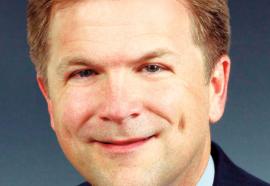Walking the Walk
Eco-Developer Pat Wood III explains how competitive markets are good for green business.
The debate over implementing comprehensive electric-competition policies throughout the U.S. economy still rages to this day. Pat Wood III, as the federal regulator, had to fight many tough, public battles in defense of his beliefs on open markets. But there is no bitterness from those battles, if there ever was. It’s quite the opposite. Interviewed at the American Wind Energy Association conference in early June, Wood punctuated his answers in the go get ’em, optimistic view of the world many remember him for at FERC.








